Rad Power Bikes RadWagon 5 Review: Final Takeaway
Overall Rating: 4.9 / 5.0
(Ratings are based on both performance and price)
More often than not, when Rad Power Bikes updates one of their models, the frame remains the same. With the RadWagon 5, Rad Power Bikes went for some major changes. The new edition of the RadWagon features a new frame and fork, new motor, new battery, new brakes and more.
While this is still the RadWagon, the changes between the 4 and 5 are significant enough to make it nearly a new e-bike. In our review of the Rad Power Bikes RadWagon 5 we will look at how the new frame, battery, motor and other features come together to make for an ideal family e-bike. We were to sum up how the new RadWagon 5 presents, we’d begin with that cliche, “new and improved.” There comes a point where so many features have changed that it might as well be a new e-bike, not an update, which is to say we really like the newest edition of the RadWagon.
There’s a lot to cover, so let’s start with the basics.
Rad Power Bikes RadWagon 5 – What We Liked
- We love the new motor. While the output is still rated at 750W, the torque has been increased to 90Nm which will help riders get up hills and accelerate up to speed.
- The 720Wh Safe Shield battery is one of the best-made, safest batteries on the market. It is certified to UL’s 2271 standard, and the entire electronics system is certified to 2849.
- The addition of a torque sensor will make the RadWagon 5 more responsive to the rider’s pedaling effort and will give motor power as soon as a rider pushes a pedal. The torque sensor has also helped the RadWagon’s range to grow from 45 mi. to 60 mi. (estimated).
- The switch to 20 in. wheels means that replacement tires will be available at most bike shops, rather than only through Rad Power Bikes.
Rad Power Bikes RadWagon 5 E-Bike Pro’s
- New motor produces 750W and got a big boost in torque, now producing 90Nm.
- 720Wh Safe Shield battery is certified to UL 2271, one of the safest e-bike batteries on the market.
- Longtail design balances stability with good maneuverability with kids aboard.
- Hydraulic disc brakes offer the sort of stopping power parents will want when hauling kids.
- Plenty of accessories to outfit it for a busy family’s needs.
- Dual-leg, motorcycle-style kickstand makes loading kids easy.
- Included wheel skirts will keep little feet and toes out of the rear wheel and drivetrain.
Rad Power Bikes RadWagon 5 E-Bike Con’s
- Families with two kids might prefer the RadWagon 4 because it leaves more room between kids.
- We prefer rigid forks on cargo e-bikes because it’s impossible to set up suspension for a broad range of payload weights.
- We’d love to see the drivetrain upgraded to 8-speed
My Experience Riding the Rad Power Bikes RadWagon 5 E-Bike
Ride Quality Rating: 4.7
Cargo e-bikes have the potential to be better on paper than they are in real life. Some are so long that turning around is like trying to drive a school bus in a grocery store. Some aren’t very stiff, so when you load them up with a couple of bags of groceries and a kiddo it can be hard to tell if the e-bike wants to go left or right. Stiffness, as it turns out, is a mandatory feature.
The RadWagon 5 is the cargo e-bike we wish the RadWagon 4 had been. The RadWagon 4 was not a bad cargo e-bike, but it had a few weaknesses that made it less fun than it could have been. One of the single biggest changes between the RadWagon 4 and the RadWagon 5 is how much stiffer the frame is.
Here’s where reading a review is really helpful to a potential buyer. As reviewers, we’ve ridden scores upon scores of e-bikes. When an e-bike isn’t stiff enough, someone who doesn’t ride many e-bikes will experience uncertainty and nervousness that they can’t seem to control the e-bike. Most of us, when faced with this experience, will conclude, “I’m not good at riding bikes.” However, that’s the wrong takeaway. When the various components of an e-bike are stiff enough, an inexperienced rider can climb on an e-bike and ride into the sunset and their experience will be that riding e-bikes is fun. Until someone has ridden both e-bikes that were stiff enough and e-bikes that weren’t stiff enough, they won’t be able to tell why they aren’t enjoying a specific e-bike.
The RadWagon 5 features a frame that, despite appearing to have less tubing, is actually stiffer than the RadWagon 4. This gives riders of the RadWagon 5 a greater degree of confidence, a finer sense of control.
The Rad Power Bikes RadWagon 5 is a great handling e-bike. Because it features a longtail design, it’s not quite as maneuverable as a commuter, but that long wheelbase boosts its low-speed stability.
** Disclaimer: What the Rad Power Bikes RadWagon 5 Is NOT **
What the Rad Power Bikes RadWagon 5 is not is a commuter. This isn’t the e-bike to buy if your primary need is riding to work and home again with an occasional stop by a store. This e-bike is overkill for that. If you don’t have kids or if you’re not buying three or four bags of groceries at the store, a commuter or utility e-bike will probably fit your needs.
The RadWagon 5 is not a bakfiets, that is, the Dutch-style cargo e-bike with the big box in front of the rider. For the most part, that’s a good thing in our view, but if you have a need to pick up multiple kids with backpacks and maybe a ball or toy—or three—it’s helpful to have a big box where you can simply toss everything in. A bakfiets is also handy if you need to be able to keep a watchful eye on a squirmy kiddo. Having the kids behind you on a longtail means being able to trust that your kids are behaving.
Range
Range Rating: 4.6
Estimated Range (from Rad Power Bikes): 20 to 60 mi.
Real World Range Test Results (from ElectricBikeReport): 26.8 mi. (PAS 5), 48.3 mi. (PAS 1)
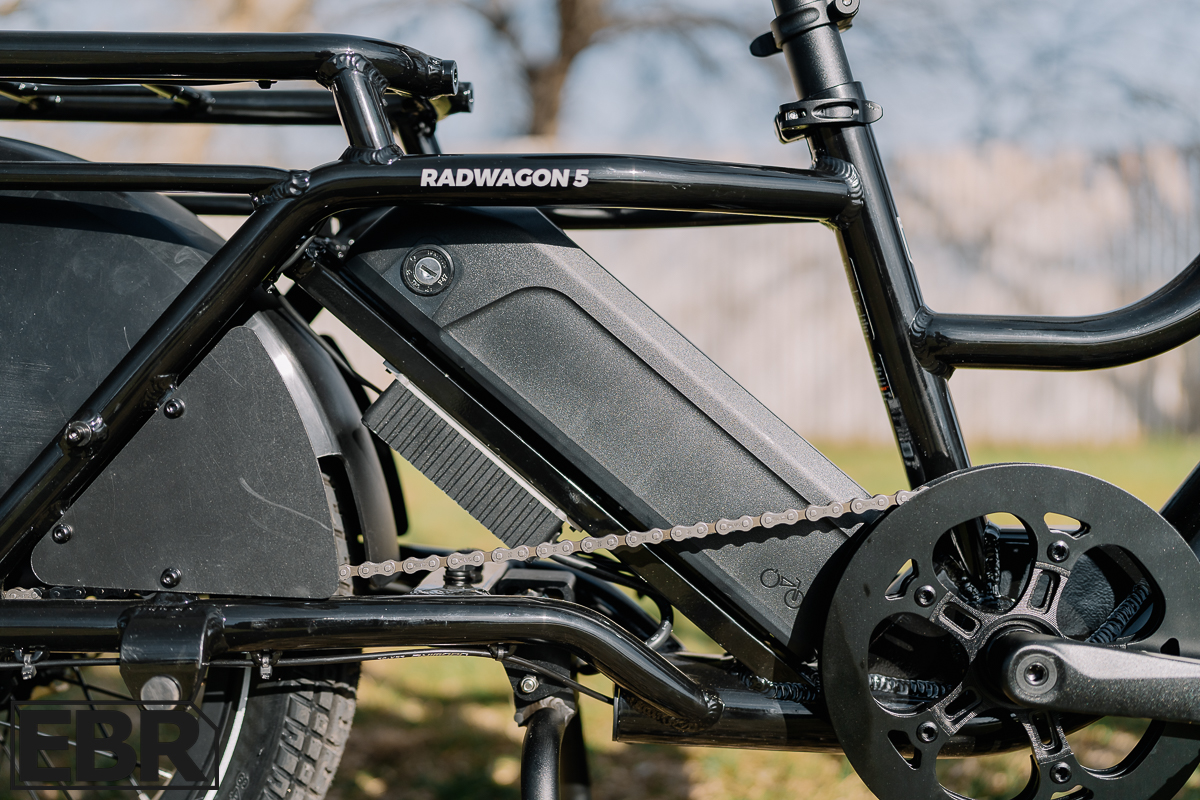
Discussing range with a cargo e-bike can be tricky. No other e-bike can have its loaded weight change so much. With a single rider, Rad Power Bikes estimates that the RadWagon 5 can cover a range of as much as 60 mi.
The Rad Power Bikes RadWagon 5 can offer as much as 60 mi. of range, a big gain over the estimated 45 mi. of range of the RadWagon 4. There are two reasons for this. The first is that the 672Wh battery was replaced with Rad Power Bikes’ new 720Wh Safe Shield battery. While that’s not a big enough jump to account for all the gain, that combined with the addition of a torque sensor also matters.
Torque sensors respond to how hard the rider is pedaling. The harder the rider pedals, the greater the motor’s output. The PAS levels determine the upper limit of how much assistance is given. As a result, riders tend to do more work when they ride an e-bike with a torque sensor and those factors combine to yield more range.
One of the most important things to keep in mind with a cargo e-bike is that every time you load it up with groceries and/or kids, the range will drop noticeably.
Power (Motor & Battery)
Power Rating: 750W, 90Nm of torque
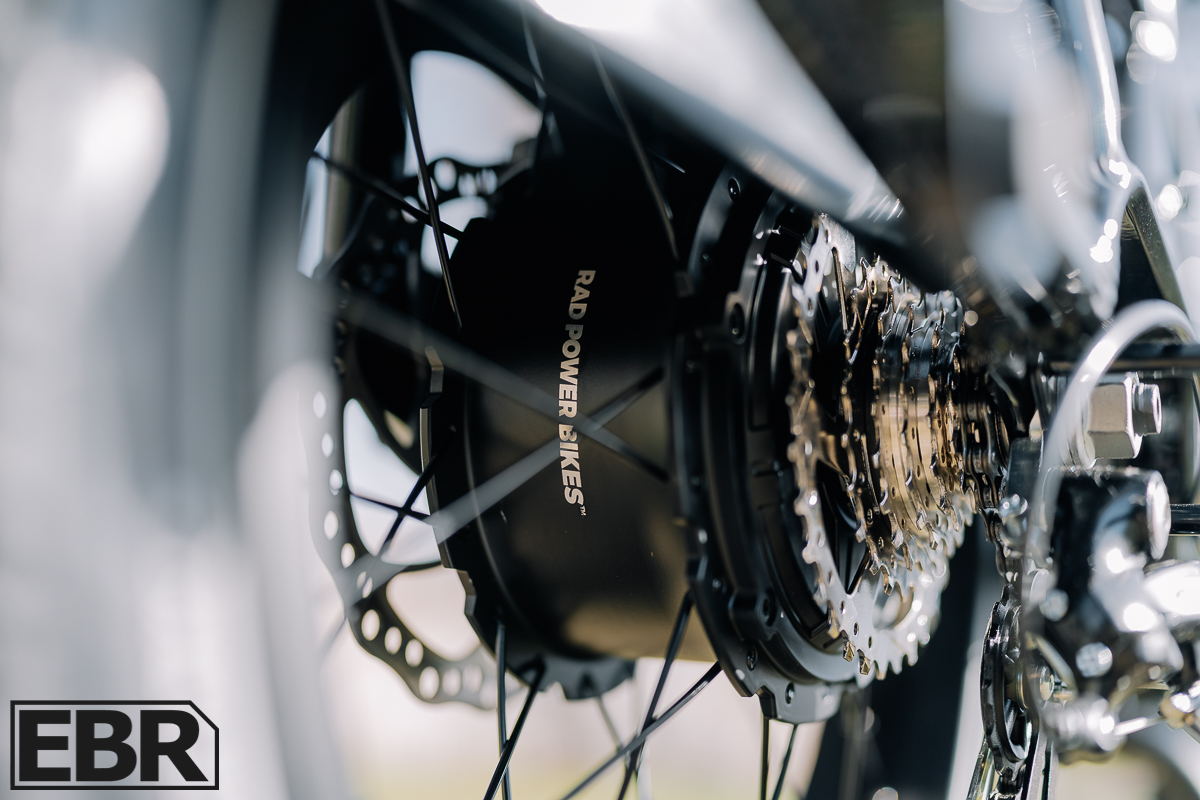
Compared to its predecessor, the RadWagon 4, the Rad Power Bikes RadWagon 5 enjoys a remarkable upgrade in both motor and battery. The new motor Rad Power Bikes includes still produces the same nominal wattage, 750. However, the torque it produces has made a big jump, from 58Nm to 90Nm; giving purchasers of the RadWagon 5 a 55 percent gain in torque.
With such a big bump in torque, what riders will experience is better acceleration when starting as well as superior climbing power; it will be more resistant to slowing on longer or steeper hills.
The added power includes yet another benefit. The RadWagon 5 can be switched from Class 2 operation (20 mph max assist speed plus a throttle) to Class 3 riding (28 mph max assist). The increased torque makes a difference in the e-bike’s ability to accelerate up to 28 mph, especially when loaded.
As we mentioned above, the battery upgrade from the previous 672Wh unit to Rad Power Bikes’ new 720Wh Safe Shield battery gives the RadWagon 5 an upgrade in both range and safety.
Rad Power’s Safe Shield batteries are “potted,” meaning that the cells are surrounded by a heat-absorbing polymer to help prevent heat accumulation. Potted batteries are highly resistant to suffering thermal runaway. To our knowledge, no other e-bike companies are potting their batteries, making the Rad Power Bikes Safe Shield some of the safest e-bike batteries on the market.
Components
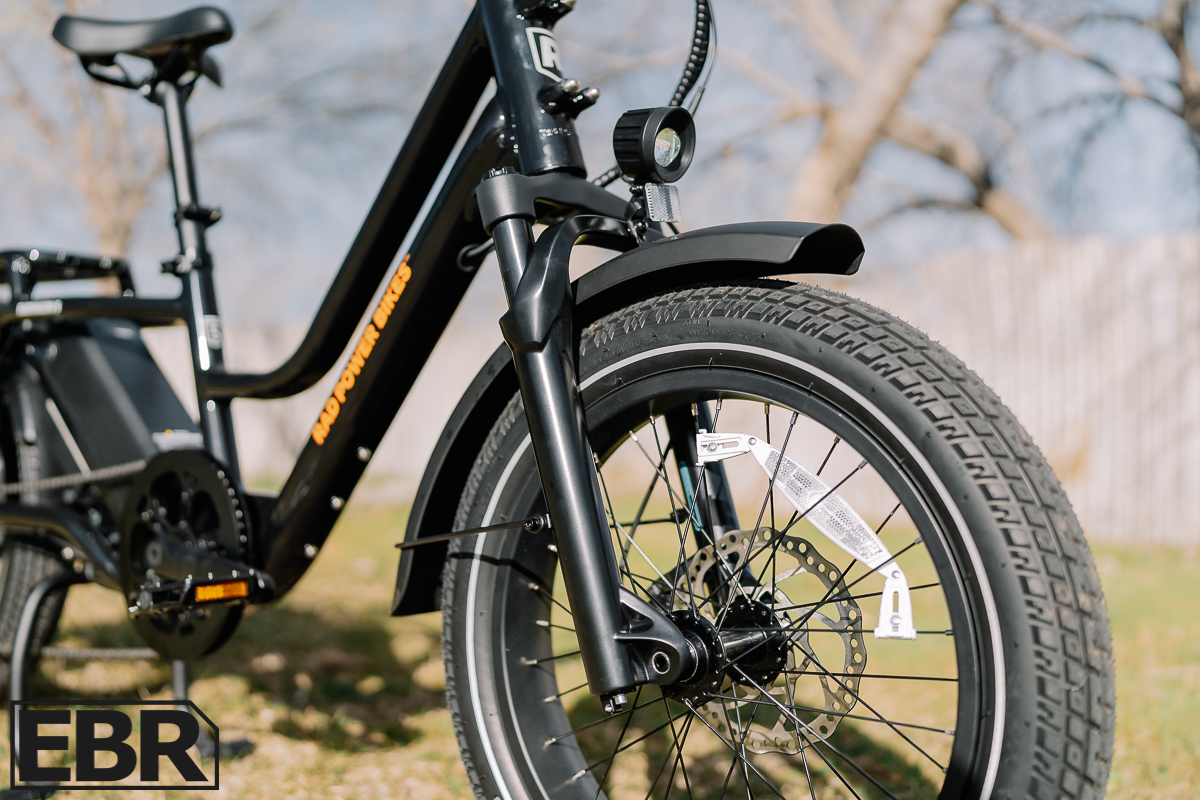
Before we dig into the components spec’d on the Rad Power Bikes RadWagon 5, we want to take a bit of a look at the new frame on which the RadWagon 5 is built. The new frame differs from the previous one in a few different ways.
First, the new frame is shorter, by about three inches. That results in a shorter wheelbase, which does two things. First, the shorter wheelbase is helpful because it makes what is a rather long e-bike a bit shorter, and in making it shorter it becomes a bit more maneuverable, especially when turning around. However, the shorter frame reduces the amount of space that can be afforded to kids. For families with a single child, this is no problem. However, for anyone who wants to carry two kids, each child will lose a bit of room.
Even if your kids never squabble about, “He’s touching me!” less room means that your kids will outgrow the RadWagon 5 a bit sooner. However, there’s no need to worry about whether or not the new frame will support a parent and two kids; it has a payload capacity of 375 lbs.
One difference that may not be immediately apparent is the change from 22-in. wheels to 20-in. wheels. The smaller wheels will make the RadWagon 5 a bit more nimble than its predecessor, but that’s not the big gain. We’re glad for this change from 22 to 20 because the only source we know of for 22-in. replacement tires is Rad Power Bikes. You can find 20-in. tires at nearly any bike shop.
One of the things we love about Rad Power Bikes’ utility and cargo e-bikes is their rich array of accessories to outfit the e-bike. They produce a variety of seats and bars, as well as offering both running boards and pegs for feet. Sure, adding these items can run up the cost by hundreds of dollars, but a cargo e-bike isn’t especially useful until you add the items that allow you to carry everything you’ll need on your trips.
In addition to the upgrades to the motor and battery, Rad Power Bikes gifted the RadWagon 5 with another upgrade: They swapped the mechanical disc brakes for hydraulic disc brakes. Honestly, we weren’t fans of mechanical disc brakes on the RadWagon 4; our opinion is that if you’re hauling kids, your e-bike ought to have hydraulic disc brakes. This particular upgrade feels less like a gift than simply correcting an error. Bottom line: The RadWagon 5 will enjoy a shorter stopping distance than the RadWagon 4 and it will be easier to scrub a bit of speed before turns as well.
The RadWagon 4 had a low-rise bar and an adjustable stem. This allowed riders to adjust the bar height and to a lesser degree how far the bar is from the saddle. With the RadWagon 5, Rad Power Bikes replaced the adjustable stem with one that is shorter and doesn’t adjust, while replacing the bar with a high-rise model that can be rolled forward or backward in the stem to offer much more reach adjustment for riders.
For us, the one real weak spot in the RadWagon 5 is the choice to go with the same 7-speed Shimano drivetrain found on nearly all of Rad Power’s e-bikes. It’s not a bad drivetrain, but with cargo e-bikes, it is often helpful to have some lower gears for climbing hills when loaded so that the motor isn’t taxed. In addition, drivetrains with eight speeds or more offer smoother shifting as well as a design for the rear wheel’s hub that is stronger, making it better able to support heavy loads. These are all design features that make sense for a cargo e-bike.
We’ve reviewed e-bikes that will claim Class 3 performance only to find that due to the decision to go with 20 in. wheels, that it can be pretty hard to pedal fast enough to reach that speed. That’s because the smaller the wheel, the bigger the gears need to be to reach 28 mph. When our colleagues at Electric Bike Report performed a speed test on the RadWagon 5 when set for Class 3 operation, they didn’t have any trouble reaching 28 mph; in PAS 5 the RadWagon 5 averaged 26.8 mph, a solid performance.
Rad Power Bikes included a suspension fork on the RadWagon 5, the RST Guide, which offers 45mm of travel. This choice is a mixed bag. A suspension fork can improve an e-bike’s handling and the rider’s comfort, but to work well, a suspension fork must be set up for the e-bike’s payload weight. If that weight varies plus or minus 10 percent, it’s no big deal, but if the weight varies by more than 25 percent—like when a parent drops a kid off at school and the payload goes from 240 lbs. to 180 lbs.—there’s no way to set up a suspension fork to do its job in both situations. Either it will be much too firm when there is one person on the e-bike or the fork will be much too soft when two people are riding. In our experience it’s better to go too firm than too soft, but there’s no ideal setup.
Knowing that many, if not most, buyers of the RadWagon 5 would be setting it up to haul passengers, Rad Power Bikes included a rear wheel skirt, which protects feet and toes from the spokes and drivetrain. This was a terrific move on their part. This is definitely accessory territory, but expecting a buyer to install one on an already assembled bike is a recipe for customer misery; thankfully, they saved us the trouble.
We don’t usually make a big deal about the kickstand included on an e-bike. With the exception of eMTBs, we consider kickstands to be necessaries (necessary accessories). It’s rare that they aren’t included; it’s also rare that a kickstand deserves a second look, but cargo e-bikes need a motorcycle-style, dual-leg kickstand that holds the e-bike securely. This does two things: It makes putting groceries or other shopping in a basket easier and it makes it easier to load kids or allow them to climb on. A child isn’t going to be wild about getting on anything that feels like it might tip over. For those reasons, we appreciate that Rad Power Bikes gave the RadWagon 5 a beefy kickstand.
Screen / User Interface / App
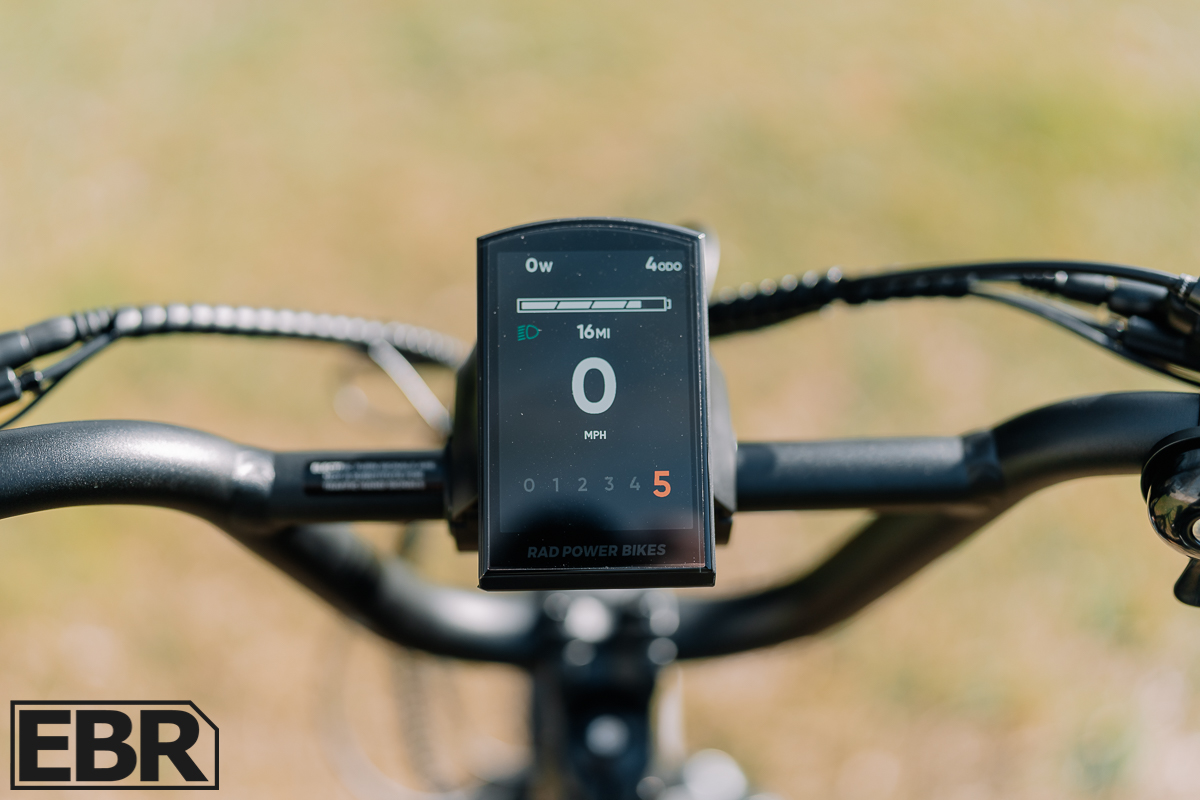
Rad Power Bikes has included their new, color display on the RadWagon 5. We like this new display for a few reasons. First, it’s larger, which makes it easier to read. Also, it’s mounted in the center of the bar, not out near the grip, which also makes it easier to read by eliminating the need to turn your head to the left to glance at it. This is why all of the truly essential gauges in your car, such as speed and gas, are positioned immediately in front of the driver. Ever had your car drift slightly to the right when changing the radio station on the console (as opposed to on the steering wheel)? Simply turning your head can cause that change in direction. That’s why having the instrumentation right in front of the driver, or rider, is the best option.
One of our favorite features of the new display is the ability to see just how many watts the motor is producing in real time. This isn’t especially interesting when the e-bike uses a cadence sensor; that’s because the output will be steady and based on the PAS level set. With a torque sensor, because it is constantly multiplying the rider’s effort by some factor, be it 100, 200 or 400 percent, the output is dynamic and constantly evolving.
Is the Rad Power Bikes RadWagon 5 Worth It?
Cargo e-bikes tend to be notably more expensive than your standard commuter or fat-tire e-bike. There are exceptions, such as Lectric’s XPedition, but as we say, the exception proves the rule. Of the many features that make the Rad Power Bikes RadWagon 5 notable—and a great value—is the fact that it retails for less than $2500, rather than more than $3000.
Most buyers will end up spending well north of that $2500 mark once they buy the collection of accessories necessary to outfit the RadWagon 5 for kid ferrying and errand running. Seats, handlebars, running boards and baskets will run that investment up some, but the right collection of accessories is what makes an e-bike like this a practical car substitute, or even replacement.
The few minor objections we have to features on this e-bike—the 7-speed drivetrain, suspension fork and shorter frame length—are minor points, the sorts of criticisms we point out if we’re not allowing anything to escape evaluation. There are longtail cargo e-bikes from other manufacturers that provide solutions for each of these points, but those cargo e-bikes tack on at least $1000 to the buyer’s investment. When weighing just how much we object to those details against the retail cost of the RadWagon 5, it’s easy to conclude that for most of us, dropping extra money isn’t exactly necessary.
We’ve talked a lot about toting kids with the Rad Power Bikes RadWagon 5, and while that’s the mission for which it is best-suited, the use that very few other e-bikes can fulfill, this is an e-bike that serve anyone who wants to do their errand running by e-bike, rather than vehicle.
Parents who wonder how—or whether—their kids will like riding on the back of an e-bike are likeley to discover just what we have: When you tell kids you’re taking the e-bike and not the car, they are easier to get out the door, more enthusiastic, too. Kids will have varied responses to speed; some will want mom or dad to go faster while some will be comforted knowing that in Class 1 or 2 operation that the e-bike will have a maximum speed of 20 mph.
Going places with your kids on an e-bike makes the experience more enjoyable for you and more of an adventure for them. It’s fun to point out things for them to look at, knowing they have nearly the same unobstructed field of vision that you do. The Rad Power Bikes RadWagon 5 can serve as a car substitute for families in a way that commuters and utility e-bikes can’t match.

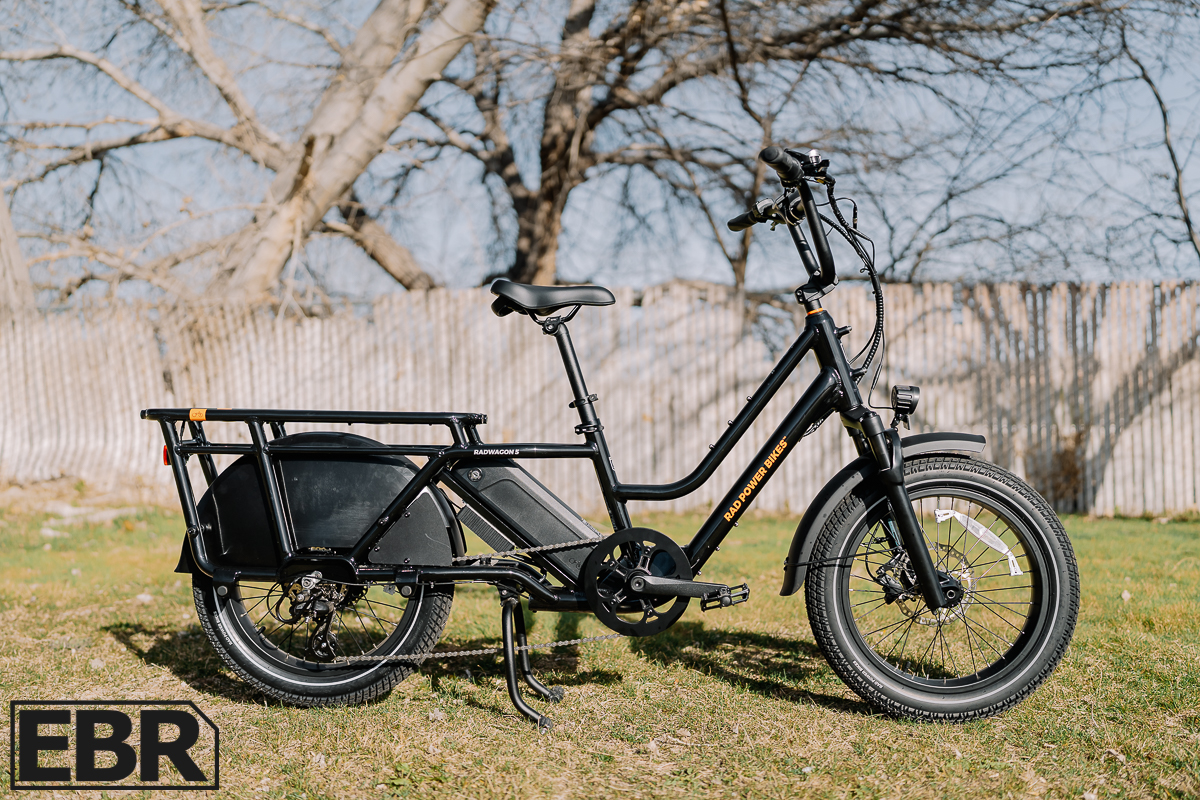
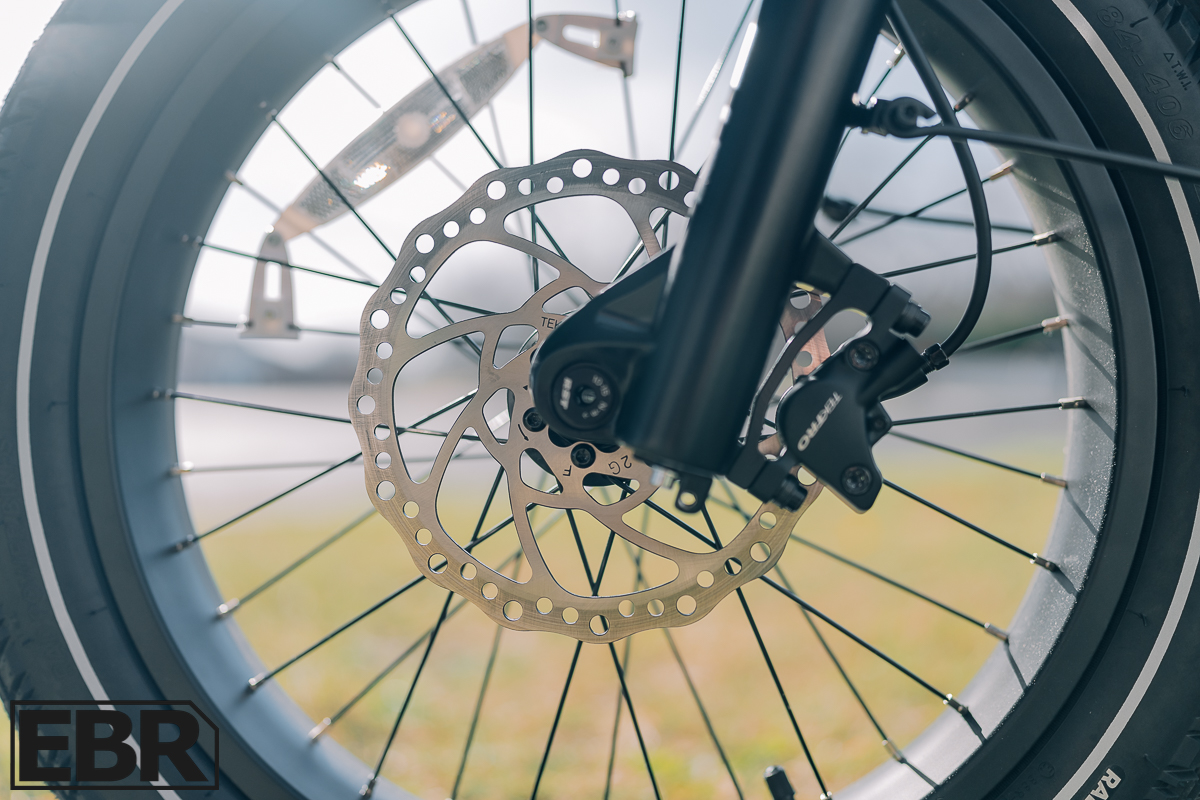
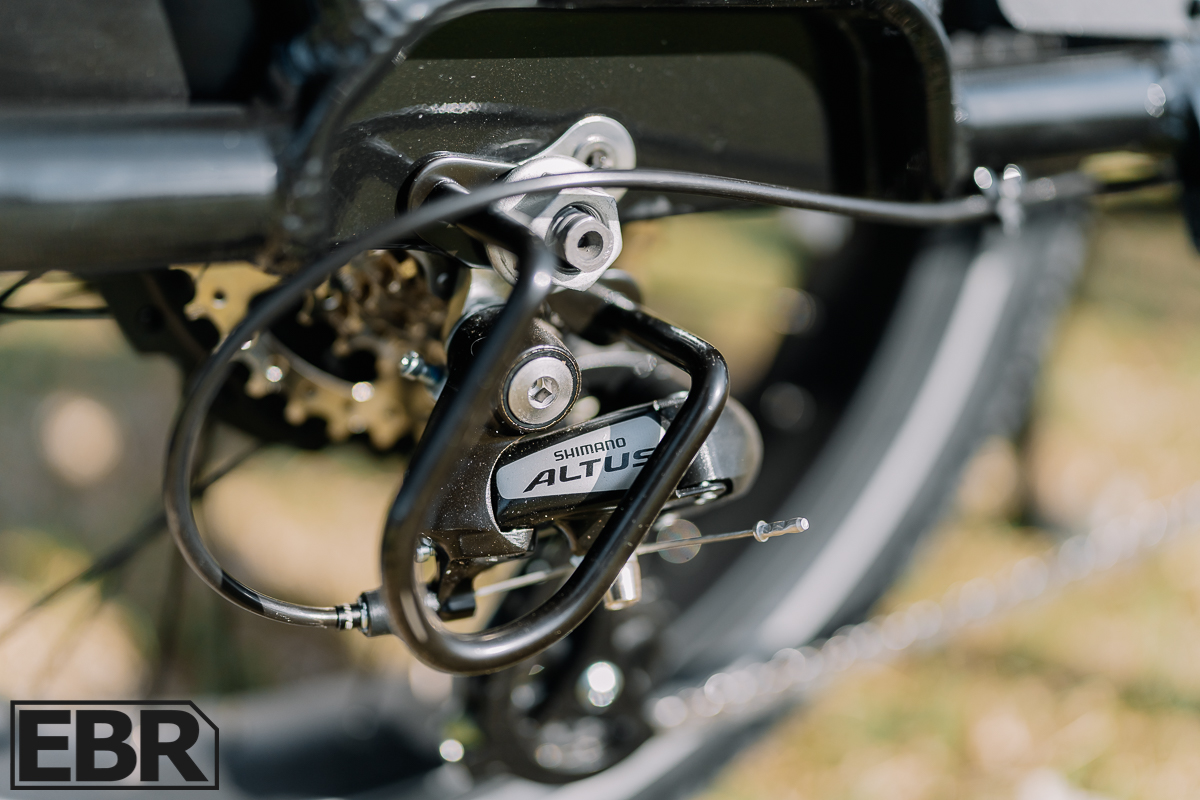
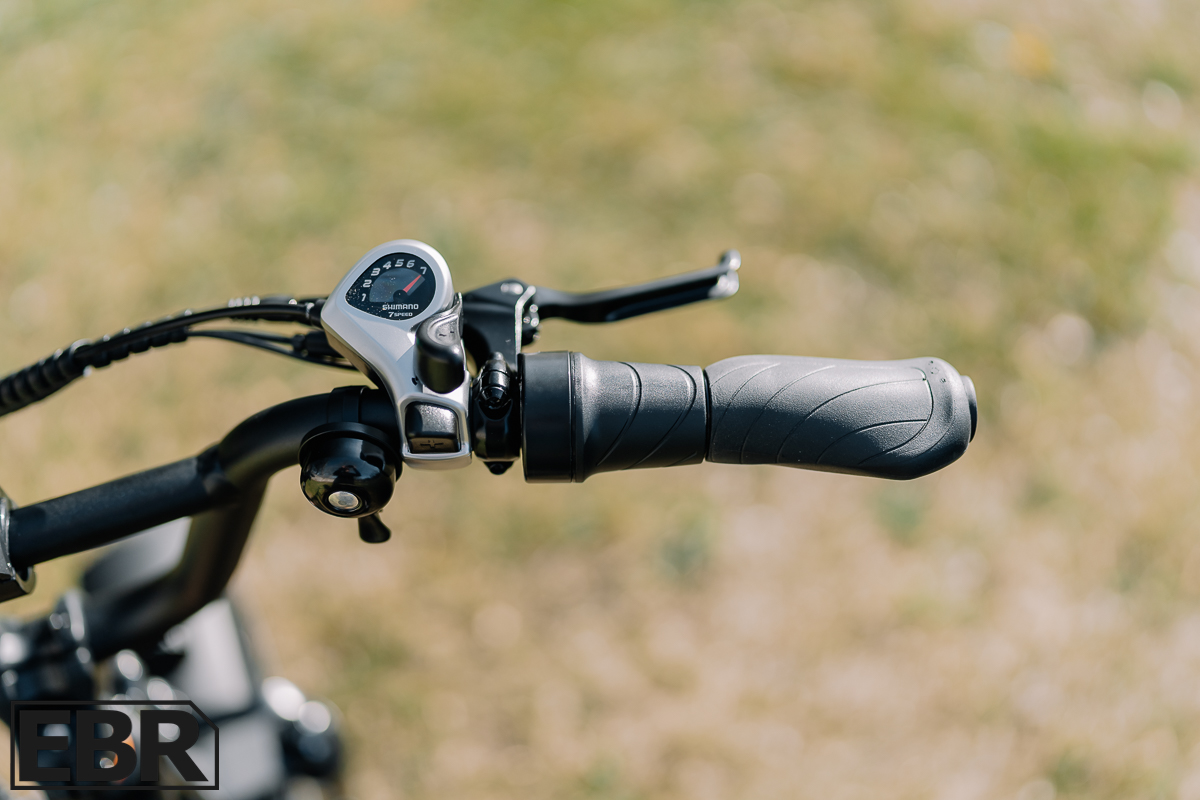
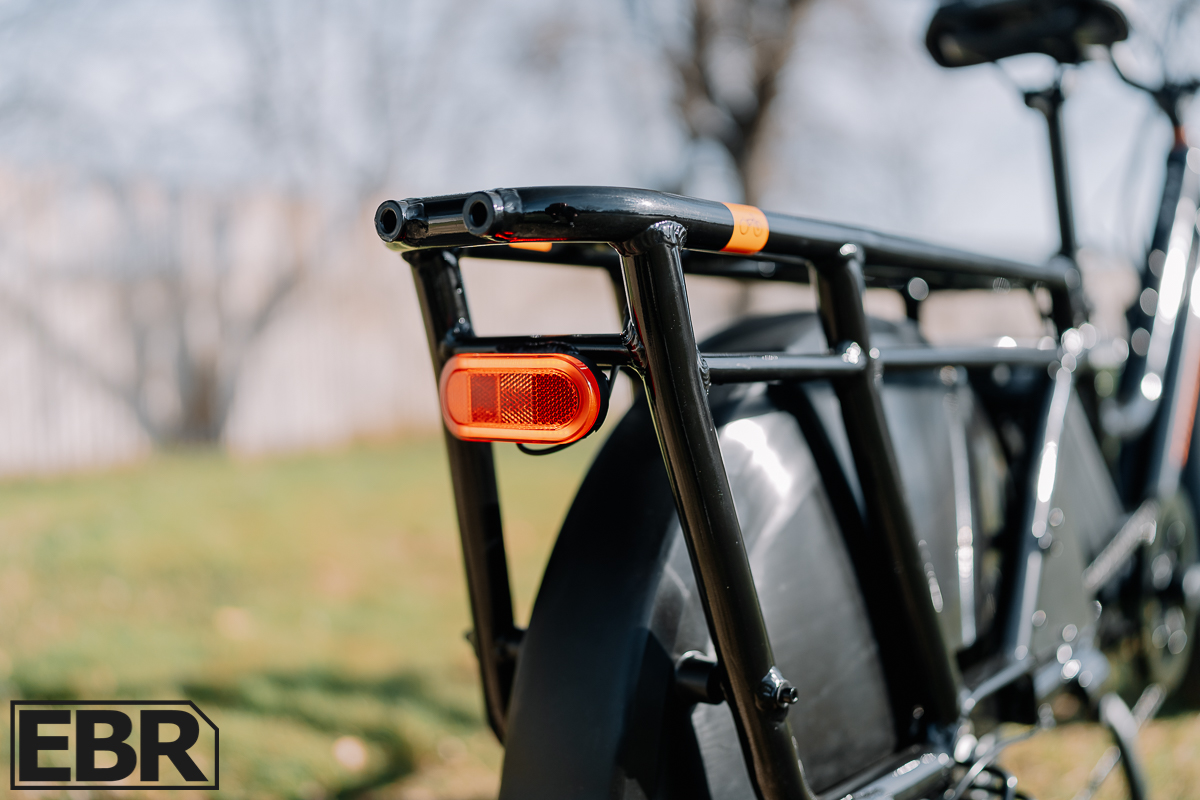
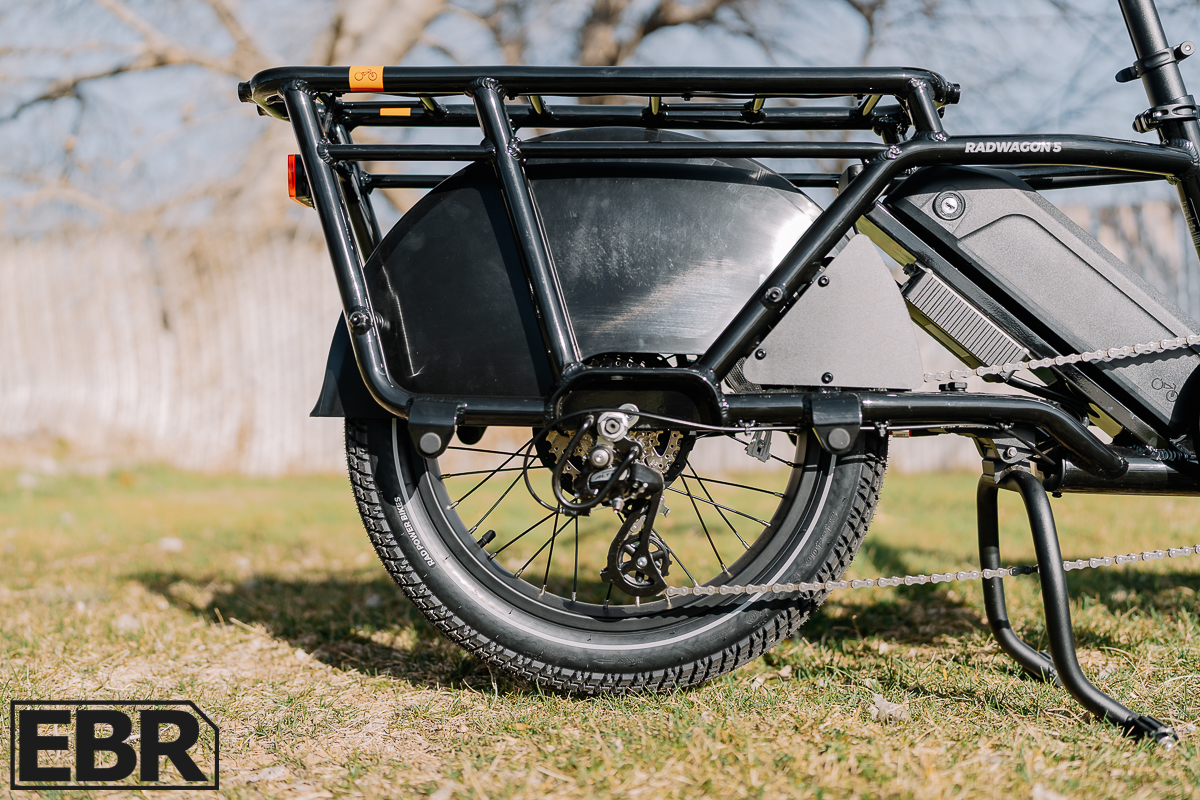
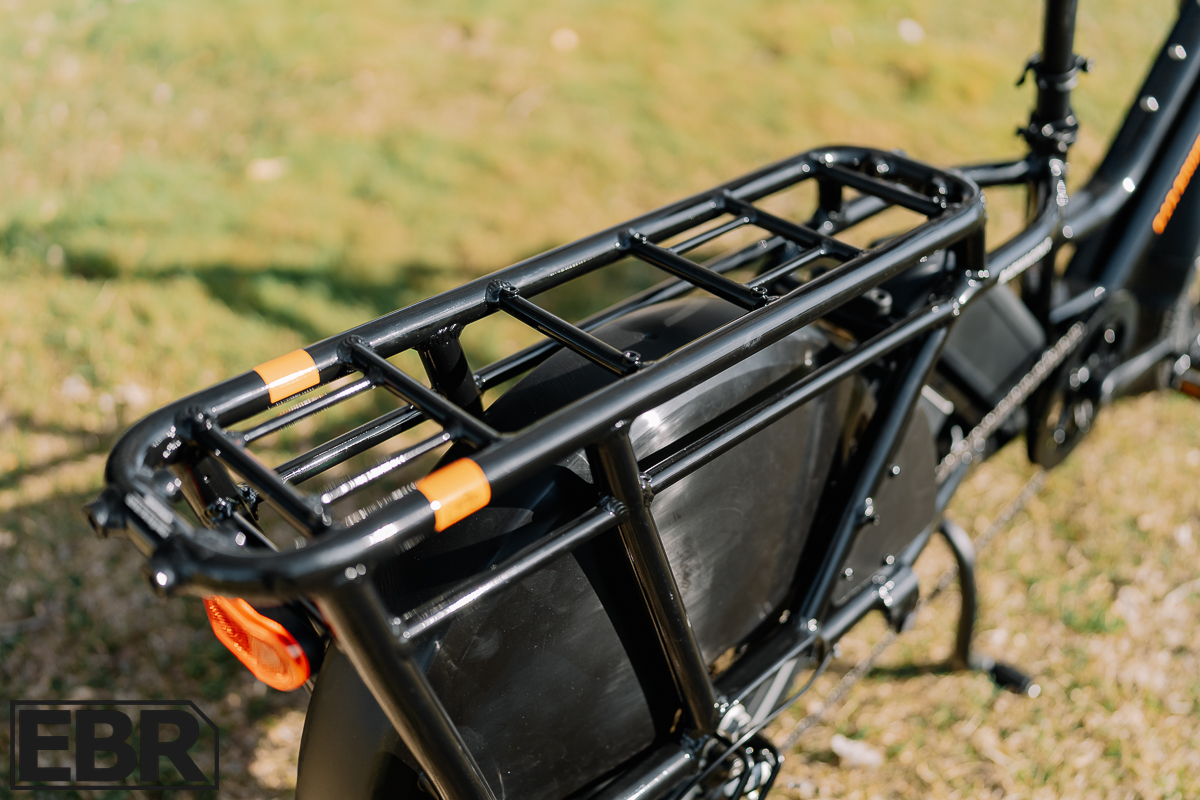

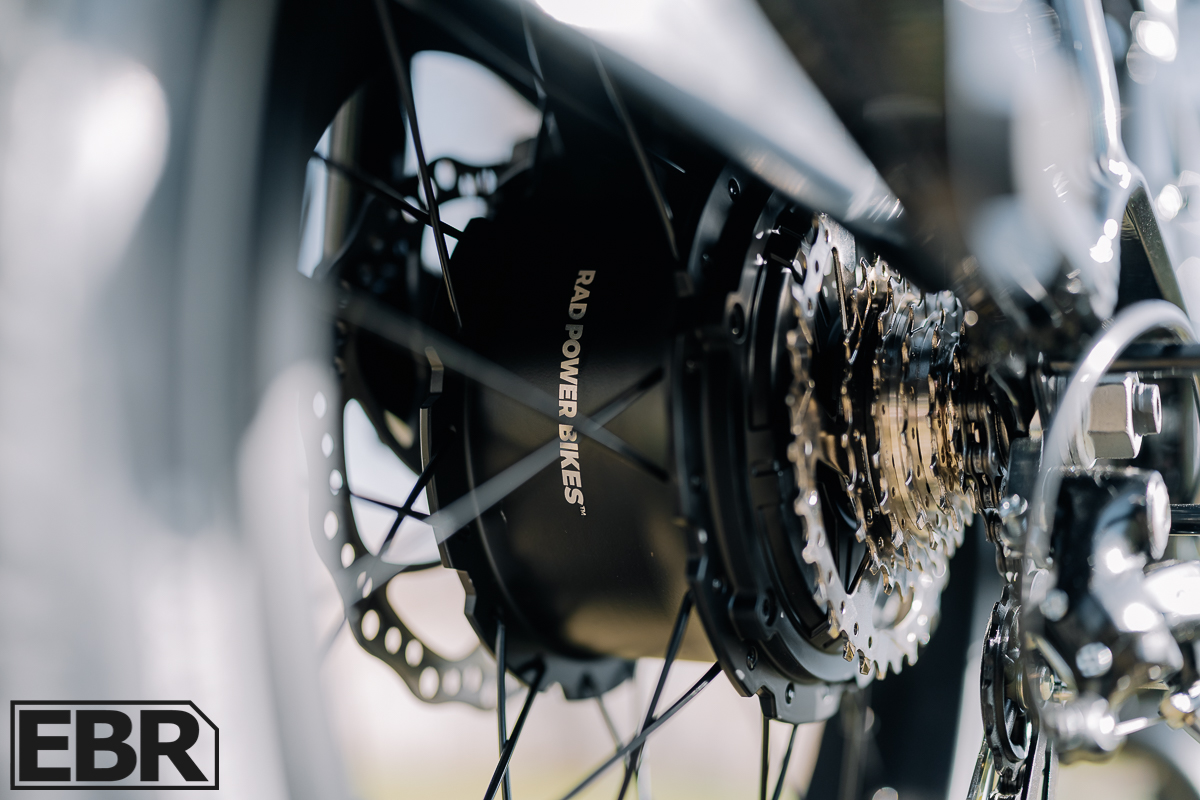


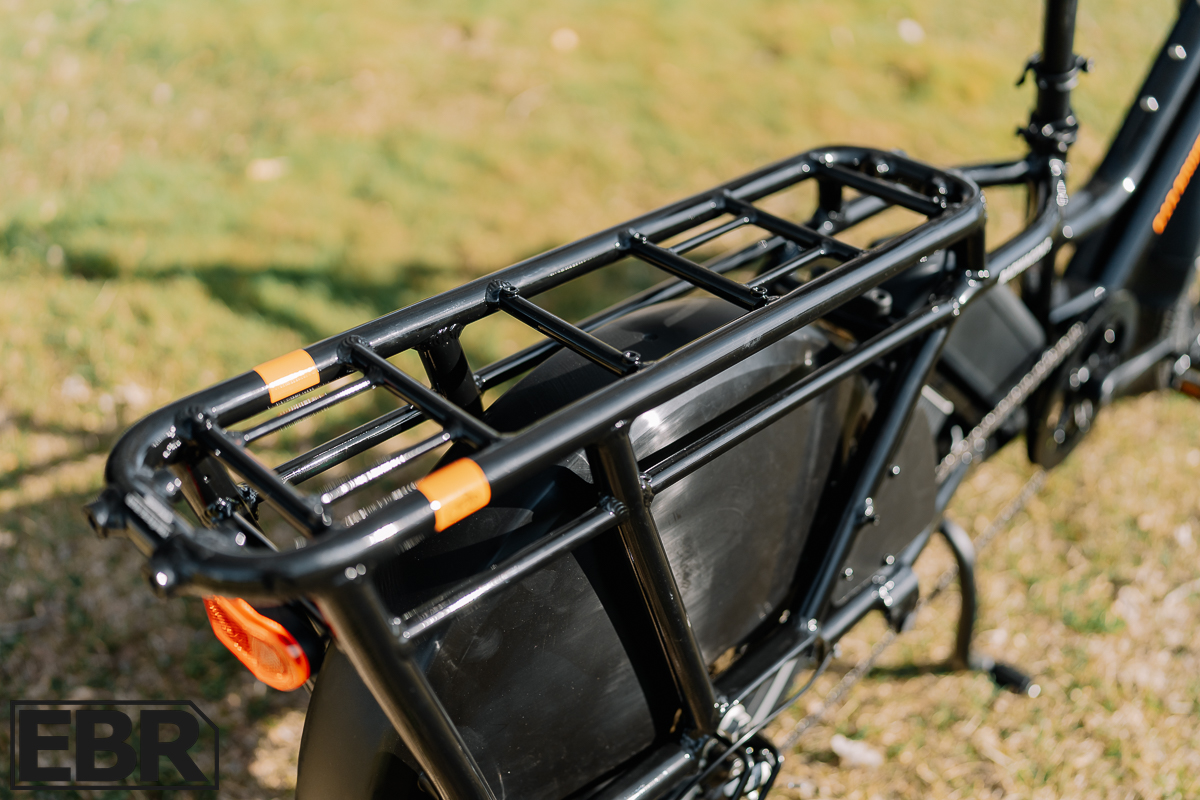

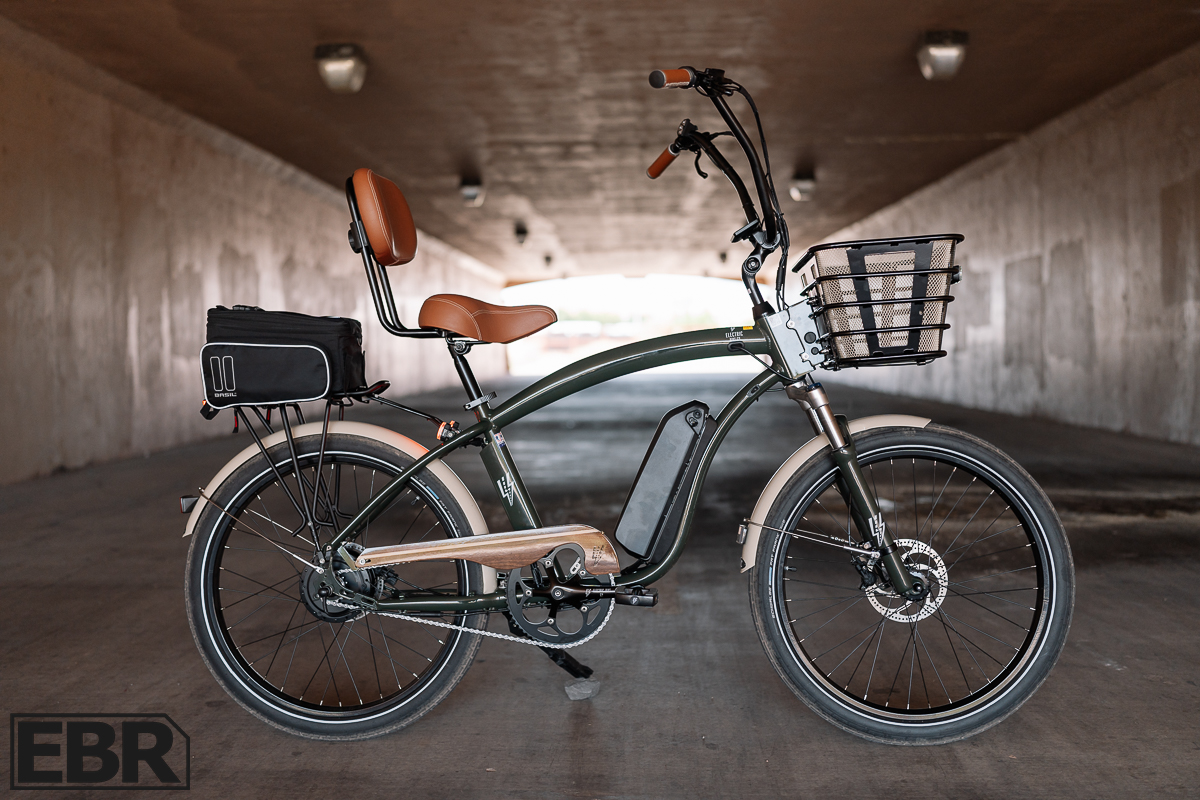
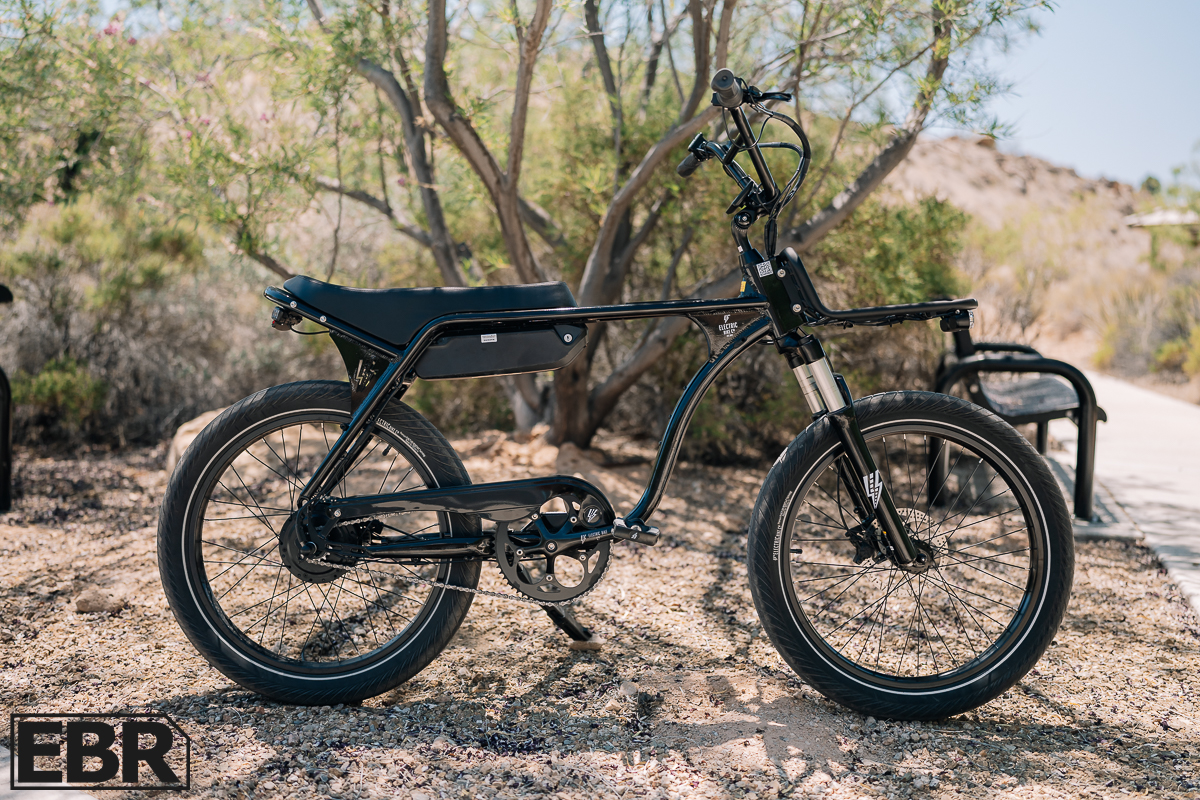
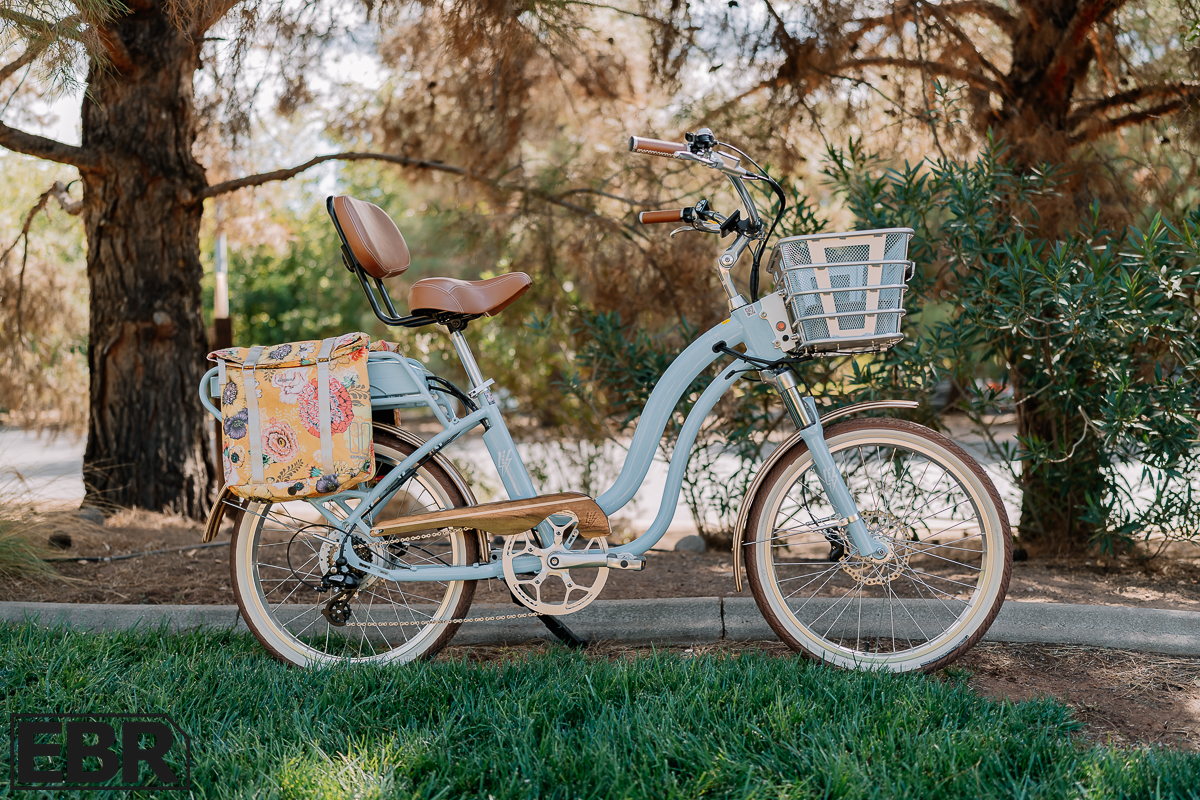
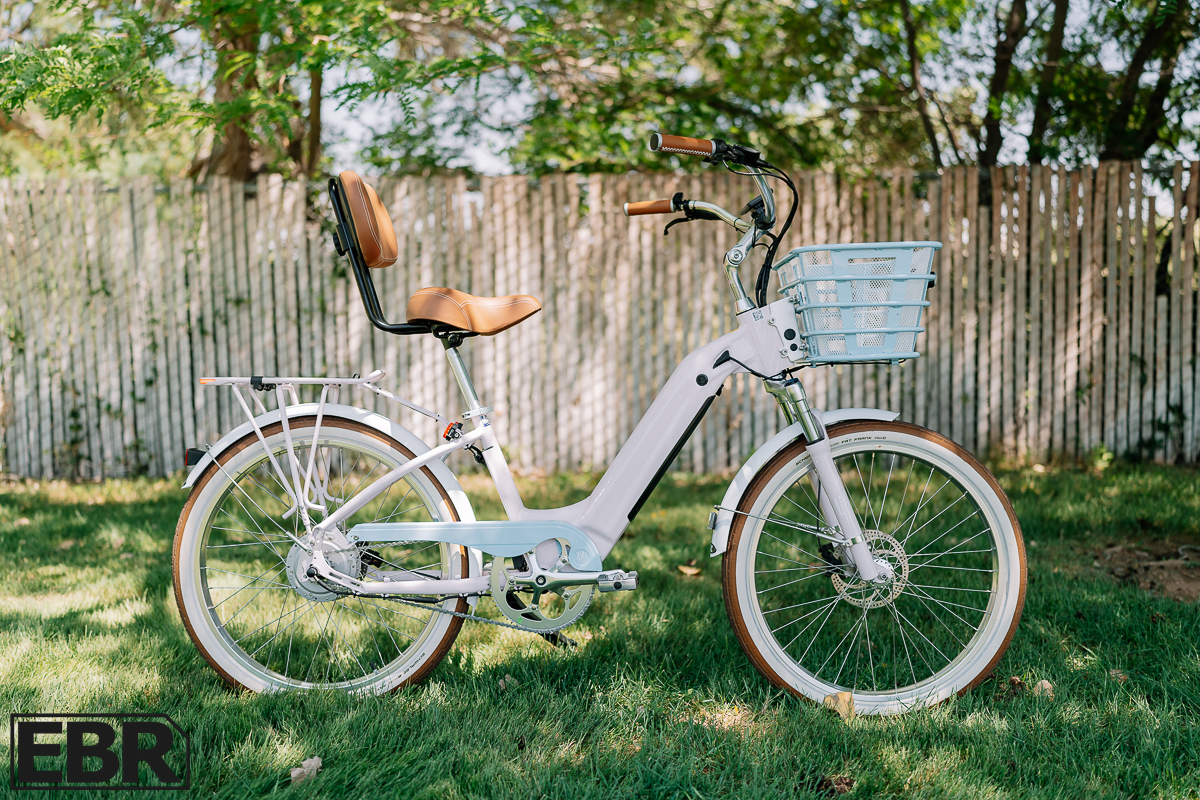
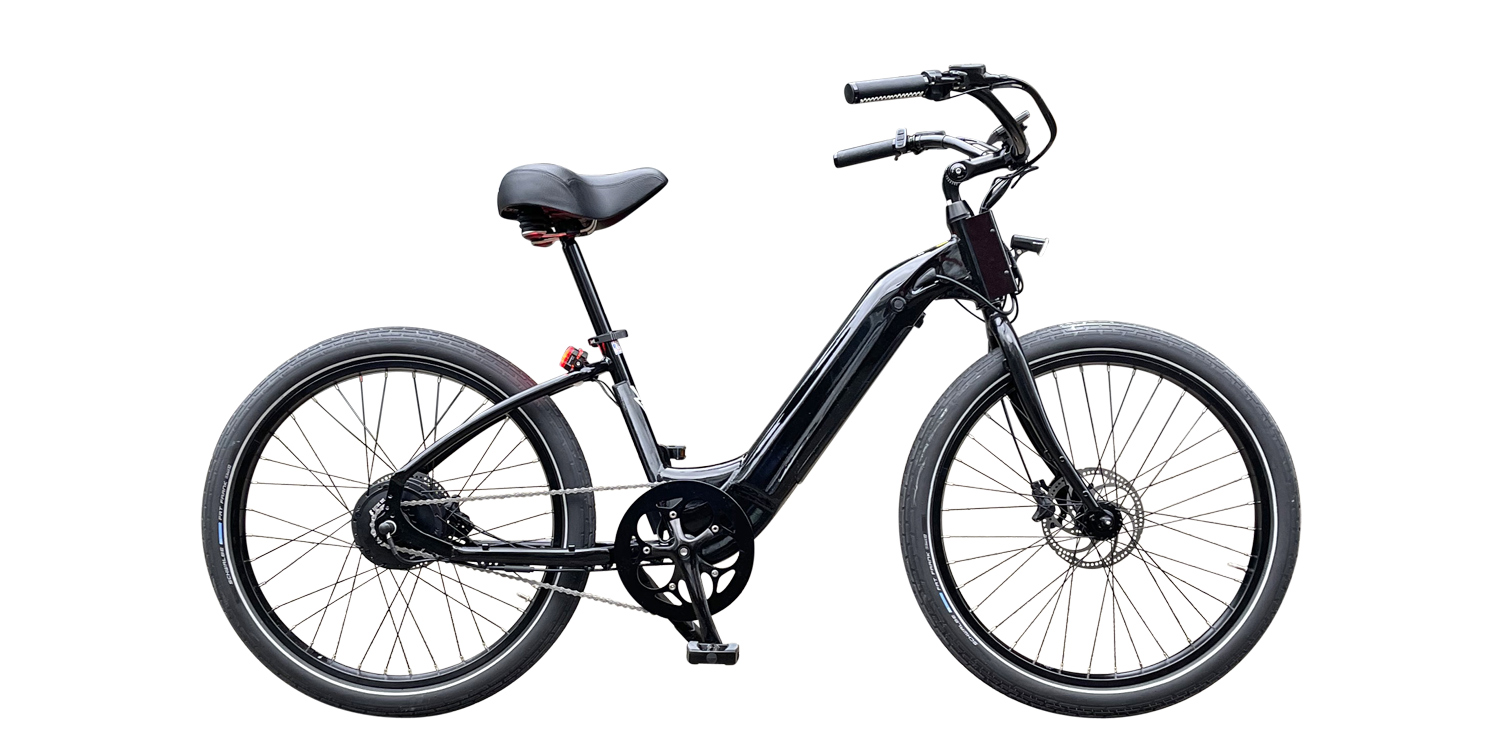
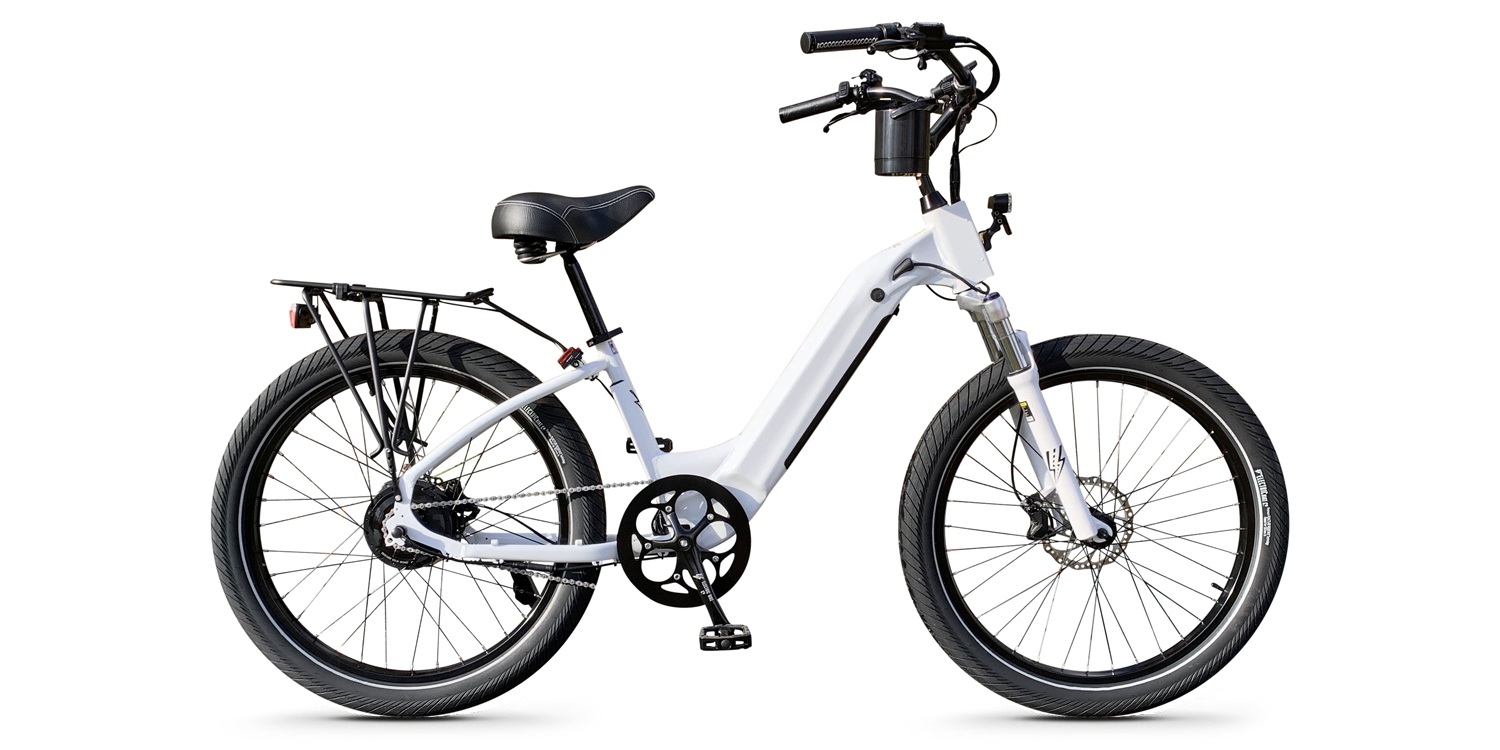

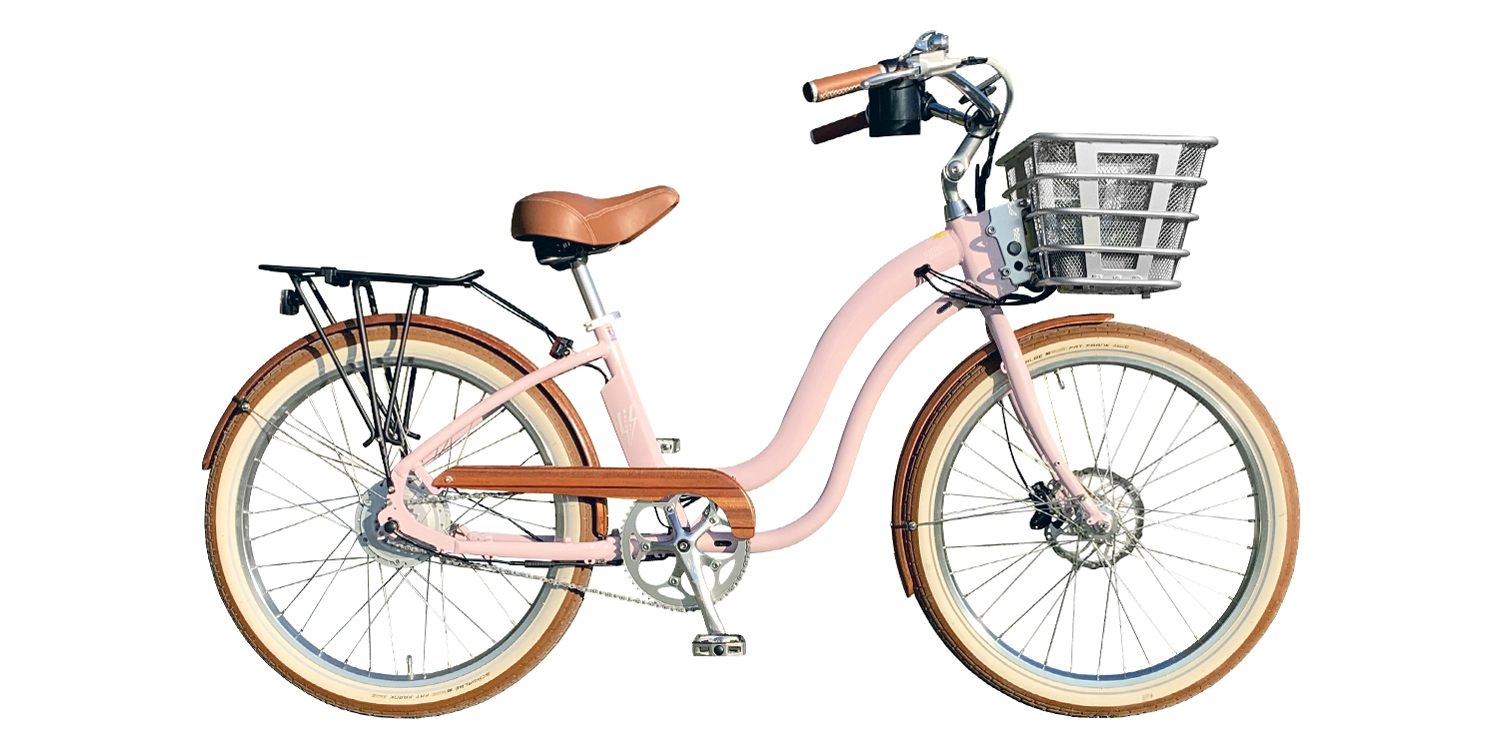
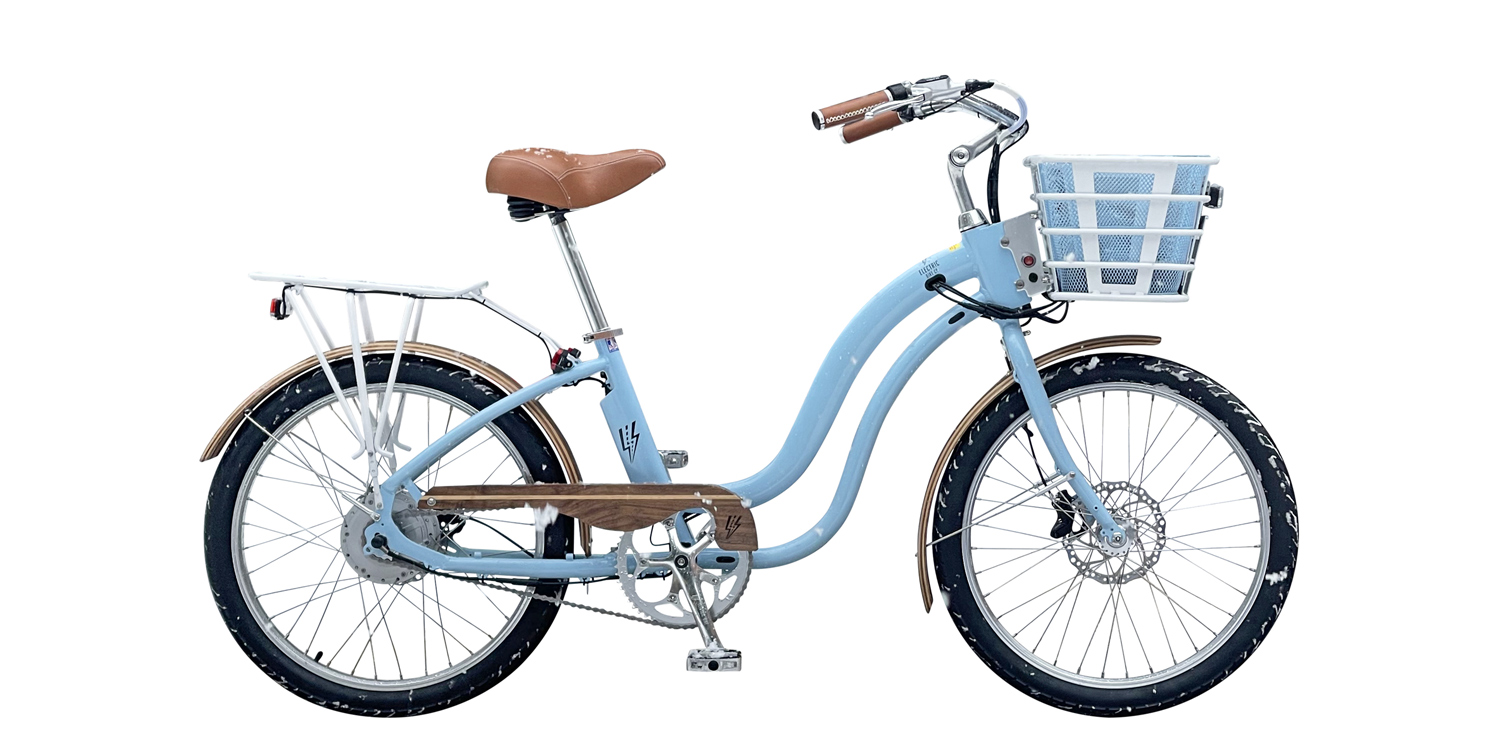
Reader Interactions